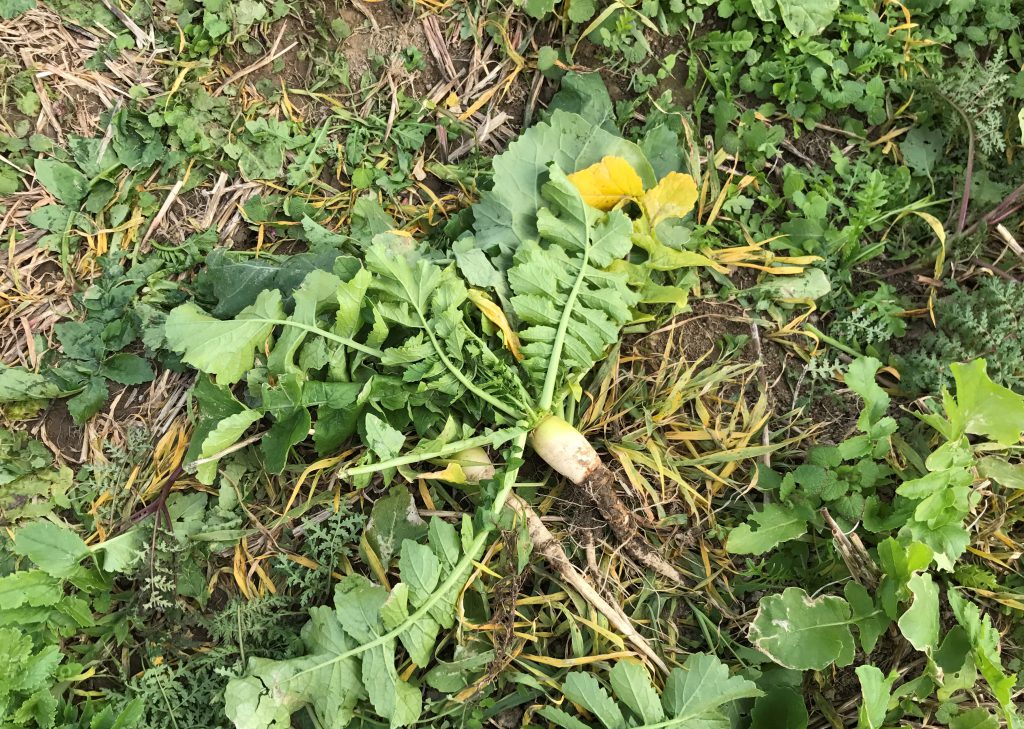Soil compaction can cause yield losses and difficult working conditions on farms. Cover crops can help to solve and prevent soil compaction through the improvement of soil structure.
The immediate impact of cover crops will be preventing soil erosion and catching nutrients which may otherwise be lost over the winter period.
The positive impact on yield from implementing the practice may not be seen in the crop directly after the cover.
The benefits of cover crops develop over time through increased soil organic matter levels and improved soil structure, as well as improved infiltration rates and soil bulk density.
What type of roots to plant?
It is important to think about plant roots when deciding what crop(s) to plant. A mix of different root types can really benefit your soil.
Plants with large tap roots will break through the soil and help to solve compaction issues. Tillage radish for example will produce a large tap root as well as some smaller roots.
Forage rape has a long and narrow tap root, with smaller lateral roots. This helps to improve soil structure.
Phacelia can be seen in the image below. It has a small tap root, but has a large set of small fibrous roots which can have a positive effect on soil structure.
Last season, John Gerraghty of Waterford IT described some of the benefits of different root types at a Drummonds’ field event. He stated: “You get a really dense root mass coming out from phacelia’s lateral roots.
There isn’t a cultivator or a piece of cultivation equipment that has been designed by man that will do that type of soil movement for you. You’re adding structure to the soil, which is really, really important.
Oats have long and slim roots and while they can be an easier option to plant, farmers should remember that they do not have the same ability to soak up nutrients as some other cover crops.
For example, Teagasc research has shown that where oats and mustard were sown over winter the oats took up approximately 60% less nitrate than the mustard crop.
Brassica crops
It is important to remember to limit the use of brassica cover crops where oilseed rape is part of the rotation as this can result in a yield loss in following crops.
Studies in the UK estimated this loss at approximately 6%. Studies in the UK also showed that a yield benefit was most likely to come from brassica cover crops when they are used in a non-inversion, shallow tillage system.



